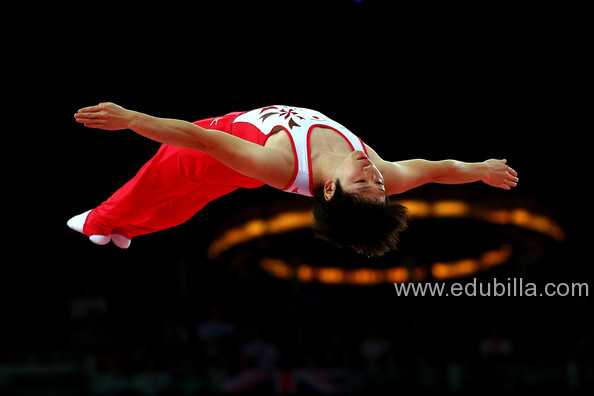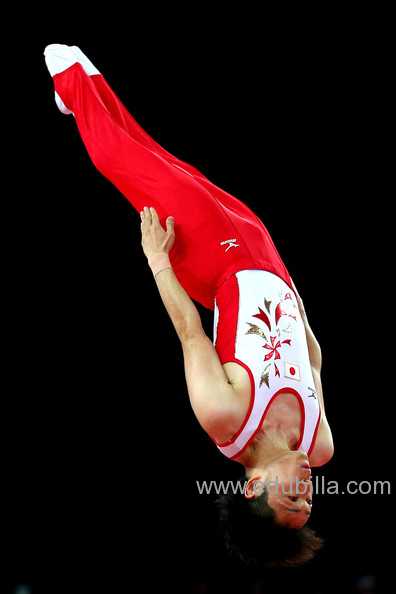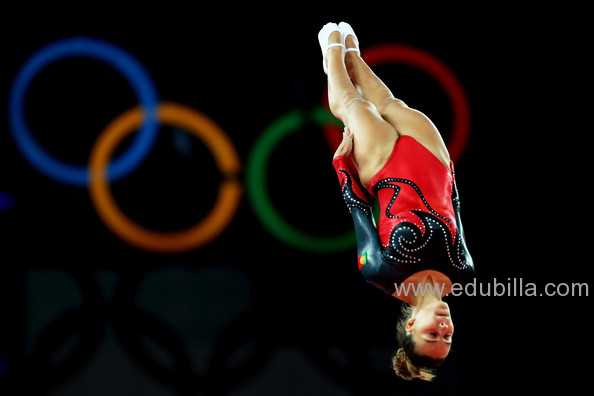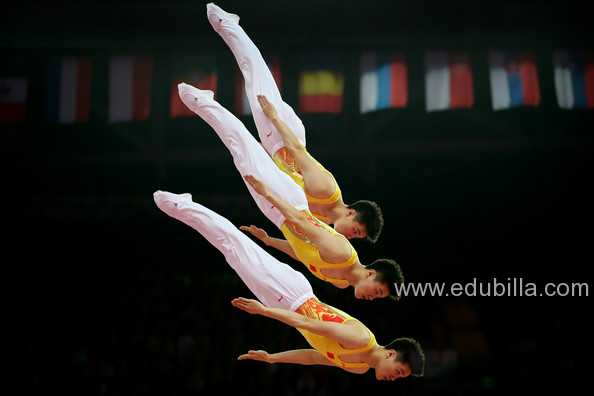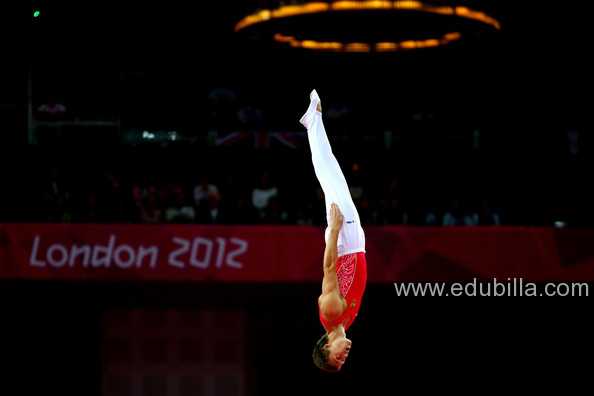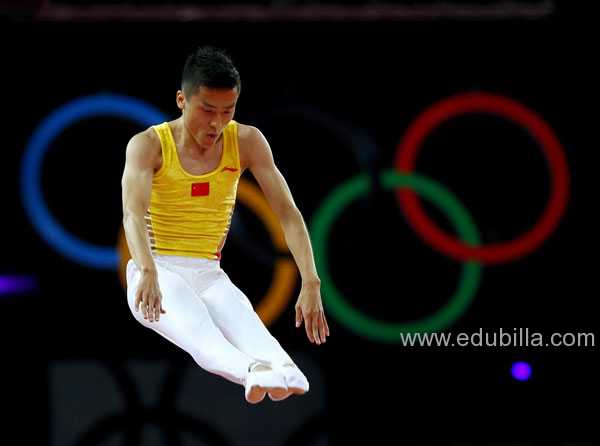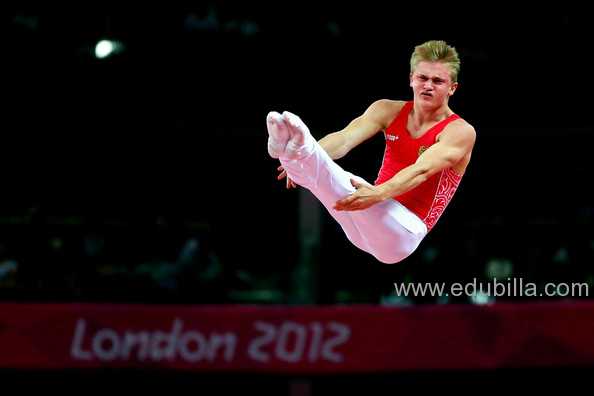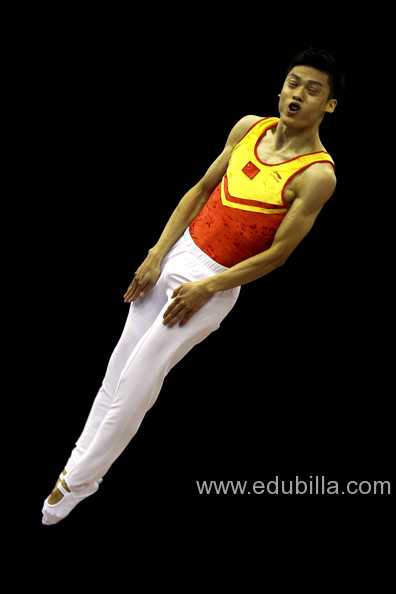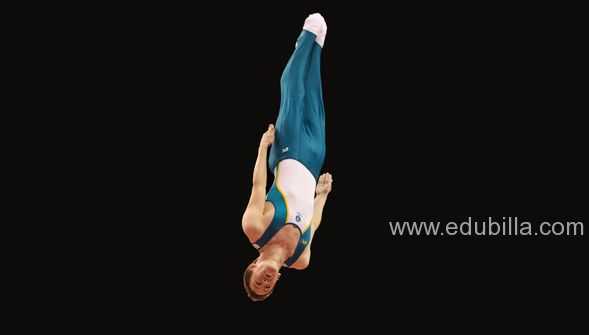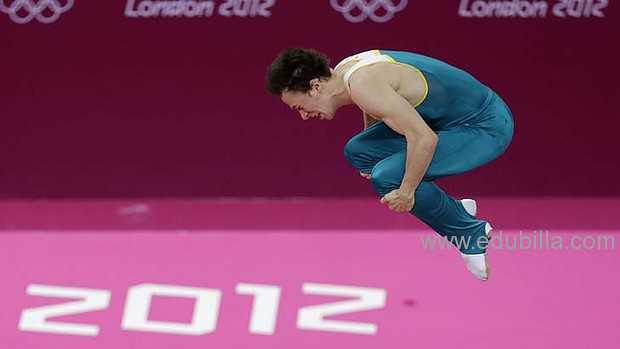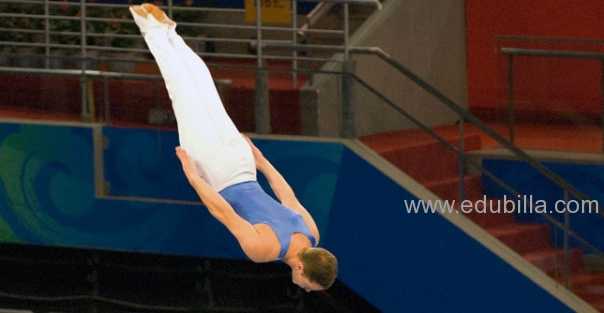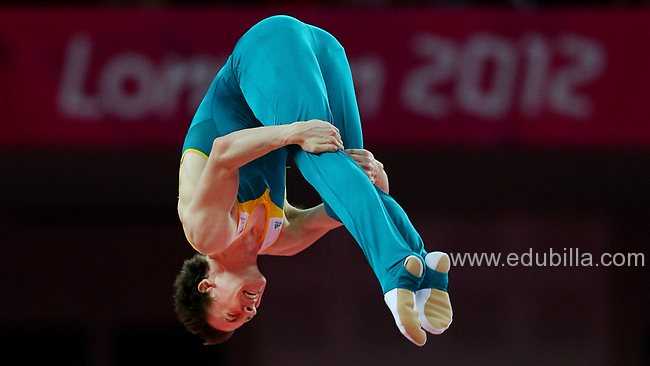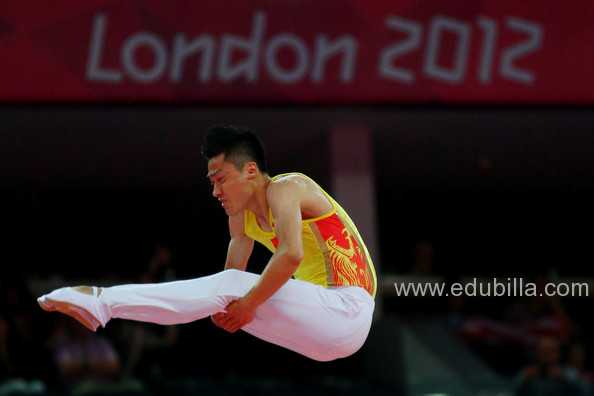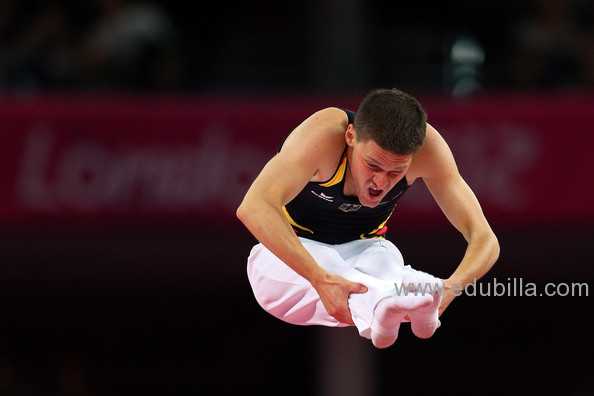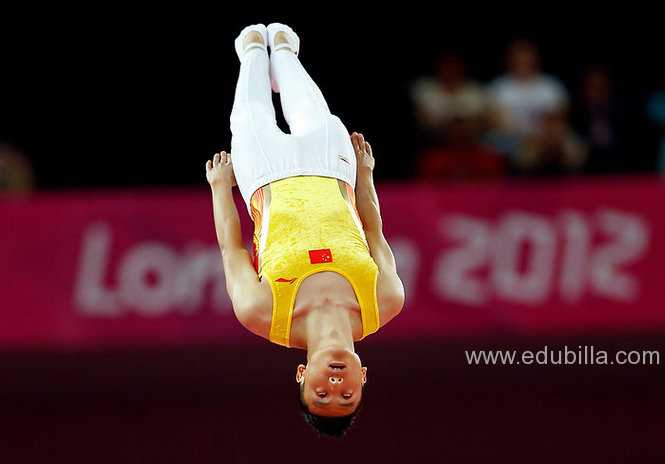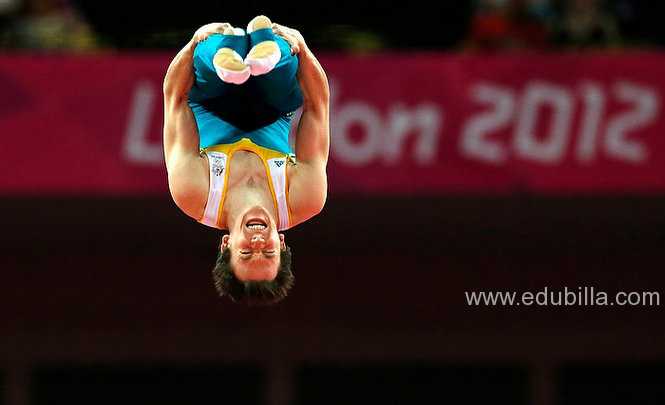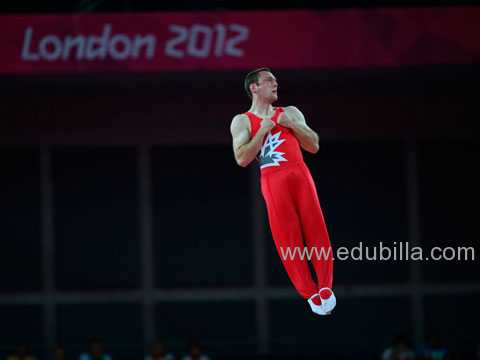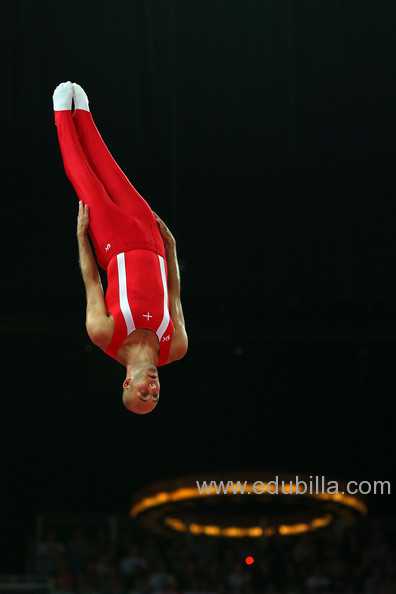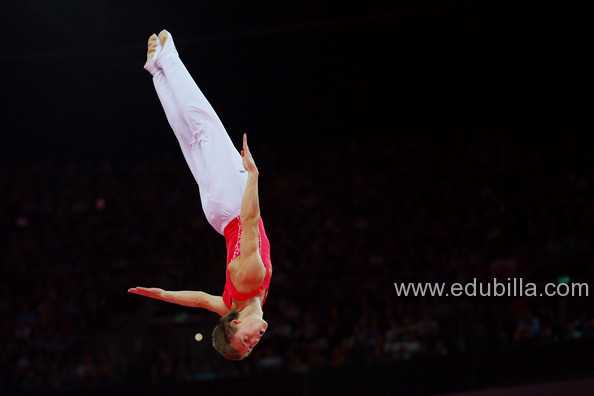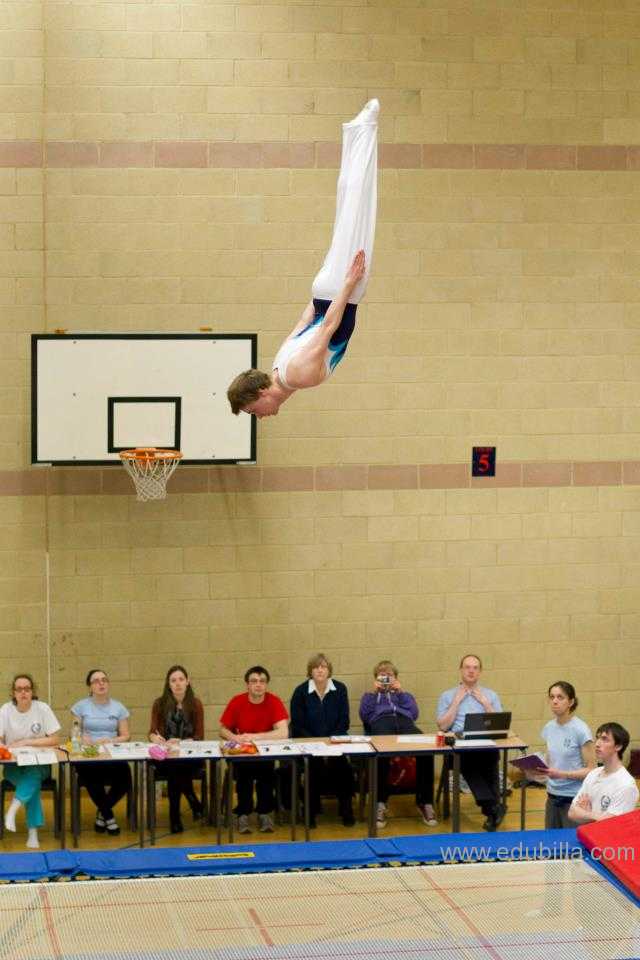
Overview Of Trampolining
Trampolining is a competitive Olympic sport in which gymnasts perform acrobatics while bouncing on a trampoline.These can include simple jumps in the pike, tuck or straddle position to more complex combinations of forward or backward somersaults and twists.
There are three related competitive rebound sports, synchronized trampoline, tumbling (or power tumbling) and double mini-trampoline.
Moves:
Competitive trampolining routines consist of combinations of 10 contacts with the trampoline bed combining varying rotations, twists and shapes with take-off and landing in one of four positions:
- Feet
- Seat
- Front
- Back
In competitions, moves must usually be performed in one of the following 3 basic shapes:
Tucked-with knees clasped to chest by hands
Piked-with hands touching close to feet and both arms and legs straight
Straight-body in straight position with legs together, toes pointed, and arms by the sides
A fourth 'shape', known as 'puck' because it appears to be a hybrid of pike and tuck, is often used in multiple twisting somersaults - it is typically used in place of a 'tuck' and in competition would normally be judged as an open tuck shape.
Competitions:
Individual trampoline:
The first individual trampolining competitions were held in colleges and schools in the USA and then in Europe. In the early years of competition there was no defined format with performers often completing lengthy routines and even remounting if falling off partway through. Gradually competitions became more codified such that by the 1950s the 10-bounce routine was the norm thereby paving the way for the first World Championships which were organised by Ted Blake of Nissen, and held in London in 1964. The first World Champions were both American, Dan Millman and Judy Wills Cline (both pictured to the right together with members of the Household Cavalry at the closing ceremony). Kurt Baechler of Switzerland and Ted Blake of England were the European pioneers and the first ever televised National Championships were held in England in 1958.
Format:
The International Trampolining Federation became part of the Fédération Internationale de Gymnastique in 1999. FIG is now the international governing body for the sport which is paired with Tumbling as the skill sets overlap. International competitions are run under the rules of FIG. Individual national gymnastics organizations can make local variations to the rules in matters such as the compulsory and optional routines and number of rounds for national and local competitions.
Synchronized trampoline:
In synchronized trampolining, two athletes perform exactly the same routine of ten skills at the same time on two adjacent trampolines. Each athlete is scored separately by a pair of judges for their form in the same manner as for individual competitions. Additional judges score the pair for synchronization. Fewer points are deducted for lack of synchronization if the pair are bouncing at the same height at the same time. The degree of difficulty of the routine is determined in the same way as for individual trampoline routines and the points added to the score to determine the winner.
Double mini-trampoline (DMT):
A double mini-trampoline is smaller than a regulation competition trampoline. It has a sloped end and a flat bed. The gymnasts run up and jump onto the sloping end and then jump onto the flat part before dismounting onto a mat. Skills are performed during the jumps or as they dismount.
Tumbling (Tumble):
Tumbling, also known as power tumbling, is an acrobatic discipline which combines some of the skills of artistic gymnastics on the floor with those of trampolining. It is practised on a 25-metre long spring track (also called a tumbling track or rod floor). It was developed from tumbling performances performed by entertainers from very early times but as a sport is now codified, regulated and judged and performed using standardised special equipment.
Competitors perform two passes, each containing eight skills including twisting somersaults along the track ending in a 'dismount' skill. The dismounting skill is often another double or triple full or a double or triple back somersault, which can also include some extra twists.
Game Rules
The Basics
Trampoline Gymnastics involves a performance of a series of 10 skill routines with a diversity of single, double and triple somersaults, with and without twists. Athletes are required to master defined techniques, fly smoothly through the air and have a perfect body control to achieve success in this thrilling sport. The athletes should finish their performances in an upright position with both feet on the trampoline bed. They must stop the bed moving entirely and hold this still position for three seconds before they move. Judges give scores based on certain criteria such as the level of difficulty, style of execution and timings after deducting the penalties. The highest and lowest execution scores are eliminated and the three remaining scores are aggregated to the single rating. The best eight scorers with highest points from the qualification round are selected for the final round to perform another optional routine. Athlete with the highest score wins the gold!
Field Of Play
The sport of Trampoline Gymnastics consists of two trampolines placed besides each other, that is, 2m apart. Both these trampolines are 10m away from the judging panel. Each trampoline measures 5.05m in length, 2.91m in width and 1.155m in height. The bed is made up of nylon or string material and is woven with strips that are less than 6mm thick, and is firmly attached to the frame with more than 100 steel springs. Men and women may compete either in socks or in gym shoes. A thick large mat, called 'the safety platform', is placed on the floor at either end of the trampoline to lessen the force if any athlete falls down the trampoline.
Qualifications And Disqualifications
During Olympics, for both men and women athletes, individual competitions (qualifications and finals) are organized. Entry for the competitions is based on the qualifications. If any athlete is seen misbehaving or deviating from the rules and regulations, he/she is given warning by the Chair of Judges Panel and/or Superior Jury, and/or the other concerned authority. If the delinquency is repeated, the athlete may even be disqualified from the competition. The Executive Committee or Disciplinary Commission has the authority to take further penalizing actions if required.
Equipments Need For Trampolining
The trampoline
consists of a metal frame supporting the spring bed that the gymnasts bounce off to perform their routines. The trampoline is 5.05 metres long, 2.91m wide and 1.155m high. The bed is made from nylon or string material and is only about six millimetres thick.
The mat
A large, thick mat, known as the safety platform, sits on the floor at each end of the trampoline. It is designed to cushion the impact if anyone falls from the trampoline.
Footwear
Men and women may compete in socks or gym shoes.
History Of Trampolining
Developed in 1934, trampolines were originally used to train astronauts or were used as a training tool for other sports. They soon became popular in their own right and a sport was born.
Man-made
The first modern trampoline was built by George Nissen and Larry Griswold around 1934 at the University of Iowa. It was initially used to train tumblers and astronauts and as a training tool to develop and hone acrobatic skills for other sports such as diving, gymnastics and freestyle skiing. People enjoyed the sensation so much, they began to trampoline for sheer fun, and it became popular in its own right.
Spaceball
Nissen and Griswold envisaged trampolines being used in a variety of new games, although they never grabbed the public’s imagination. In one, called Spaceball, two teams of two on a single trampoline with specially constructed end walls attempted to propel a ball through a middle wall, to hit a target on the other side’s end wall.
Olympic debuts
Trampolining made its first appearance at the 2000 Games in Sydney, with men’s and women’s competitions. The number of events (two) has remained unchanged since then.
A Historical Timeline of Trampoline:
1934- The history of trampoline begins.
1936- George Nissen designed the first modern trampoline.
1946- The first official trampoline competitions were held.
1957- Kurt Bachler opened the first trampoline headquarters in Europe.
1964- International Trampoline Federation (FIT) was founded.
1964- The first World Championships were held.
1966- The first year Syncronized Trampoline was included in World Championships.
1969- The first European Championships were held.
1981- The first World Games were held.
1982- Trampoline team competitions were included in World Championships.
1993- Trampoline World Cup Series was organized.
1999- Trampoline became part of the International Gymnastics Federation (FIG).
2000- The first time Olympic Games hosted trampoline. (only 24 athletes)
2001- The Good Will Games were held (first and last time).
2004- 32 athletes competed at the Olympic Games.
2010- The first time Youth Olympic Games hosted trampoline.
Origin Of Trampolining
In the early 1930s, George Nissen observed trapeze artistes performing tricks when bouncing off the safety net. He made the first modern trampoline in his garage to reproduce this on a smaller scale and used it to help with his diving and tumbling activities. He formed a company to build trampolines for sale and used a variant of the Spanish word trampolin (diving board) as a trademark. He used the trampoline to entertain audiences and also let them participate in his demonstrations as part of his marketing strategy. This was the beginnings of a new sport.
Invention of Trampoline:
George P. Nissen was an American gymnast and inventor who developed the modern trampoline and made trampolining a worldwide sport.It was in 1887 that firemen started using blankets as a form of trampoline to enable them to more safely catch victims of fires as they jumped out of burning buildings.
During the early 1900s some acrobatic companies used a form of early trampoline which was covered up to hide it from the audience and allowed the acrobats to bounce higher and perform comical routines. Although no evidence has been found to support this, however many people believe that du Trampolin, a circus artiste, first invented the trampoline using a trapeze net.
First Modern Trampoline:
George Nissen and Larry Griswold are credited with designing and building the first modern trampoline in 1936. They both competed in gymnastics and diving for the University of Iowa and were inspired after seeing the tight nets used by trapeze artists. They decided to use a tight, stretched piece of canvas , as earlier versions had used, but they decided to include springs in their designs. They named the trampoline after the Spanish for diving board; Trampolín. In the early days of trampolining it was used exclusively to train divers and tumbling athletes, however soon after the sport began to develop independently.
Rebound Tumblers:
The first commercially made trampolines were produced in Cedar Rapids, Iowa in 1942 by Griswold-Nissen Trampoline& Tumbling Company. These trampolines were called ‘Rebound Tumblers’ which they trademarked at the time, but has now lost its trademark.
Second World War:
In the Second World War trampolines were used in the training of pilots and navigators by the US Navy Flight School, which allowed them to develop their concentration skills in different spatial orientations. This technique was reintroduced by the Soviet and American Space missions to show astronauts different body orientations they may experience during the space mission.
First Trampolining Team:
The first competitive trampolining team was at the University of Louisiana at Lafayette where athletes were coached by Jeff Hennessy, who is widely acclaimed as a great innovator in trampolining.
Governing Bodies
International Federation of Gymnastics(FIG):
The Fédération Internationale de Gymnastique (FIG) or International Federation of Gymnastics (IFG) is the governing body of competitive gymnastics. Its headquarters is in Lausanne, Switzerland. It was founded on July 23, 1881 in Liège, Belgium, making it the worlds oldest existing international sport organisation.Originally called the European Federation of Gymnastics, it had three member countries – Belgium, France and the Netherlands – until 1921, when non-European countries were admitted, and it was renamed to its current name.

The Origins:
The idea to set up a Solidarity Foundation for gymnasts dates back to 1999-2000. At the time, FIG President Bruno Grandi was also chairing the Italian Federation, which had a similar system designed to help gymnasts who were reaching the end of their careers.
In Switzerland, the "Hans Schachenmann" Foundation was created in 1962 by a generous donor in favour of gymnasts who had been victims of illness or accidents. President Grandi and then-Secretary General Norbert Bueche used this model to draw up a similar project for the FIG. Their project was submitted to and approved by the FIG Executive Committee.
At the 2000 FIG Congress in Marrakech (MAR), it was decided that the sum of CHF 2,000,000.— would be transferred from the FIG assets to the Foundation to set up the equity capital. A second instalment of CHF 1,000,000.— was then paid by FIG to the Foundation in 2012. The Foundation Deed was signed on June 7, 2002.
The Aims:
The aims of the Foundation are provided for under Art. 2 of the Foundation Deed. In short:
- to promote assistance and solidarity towards gymnasts who are victims of illness or accidents ;
- to support scientific research aiming at preserving gymnasts’ health ;
- to help developing countries promote gymnastics ;
- to provide gymnastics apparatus to countries in difficult situations.
Aid is provided through equity capital interest only.
The Achievements:
The Foundation mainly provides some aid to gymnasts who have been victims of accidents at gymnastics competitions or during training sessions. Unfortunately, serious accidents, such as falls resulting in paralysis, have occurred. Cases have been reported from all continents. To date, 15 gymnasts have been financially helped by the Foundation.
Several developing Federations have been supplied with apparatus or floors.
The Foundation Board is also in charge of scholarships allocated to promising young gymnasts in all Olympic disciplines and on all continents. The IOC’s annual subsidy is included in this management.
Awards Related To Trampolining
BG Proficiency Trampoline awards:
The BG Proficiency Trampoline awards provide the foundation for high quality trampolining which take the gymnast from beginner to competitor through 15 progressive levels.
The awards have been designed by technical experts from the sport of Trampoline Gymnastics and educational professionals of British Gymnastics (the UK National Governing Body) for use in gym clubs, schools and leisure centres and are currently widely used within these environments.
These awards have been endorsed by the Association for Physical Education (afPE), underpinning the teaching of trampolining within the National Curriculum and can be used for both extra-curricular and extended school provision.
Sample Documents Of Trampolining
-Viswanathan Anan

